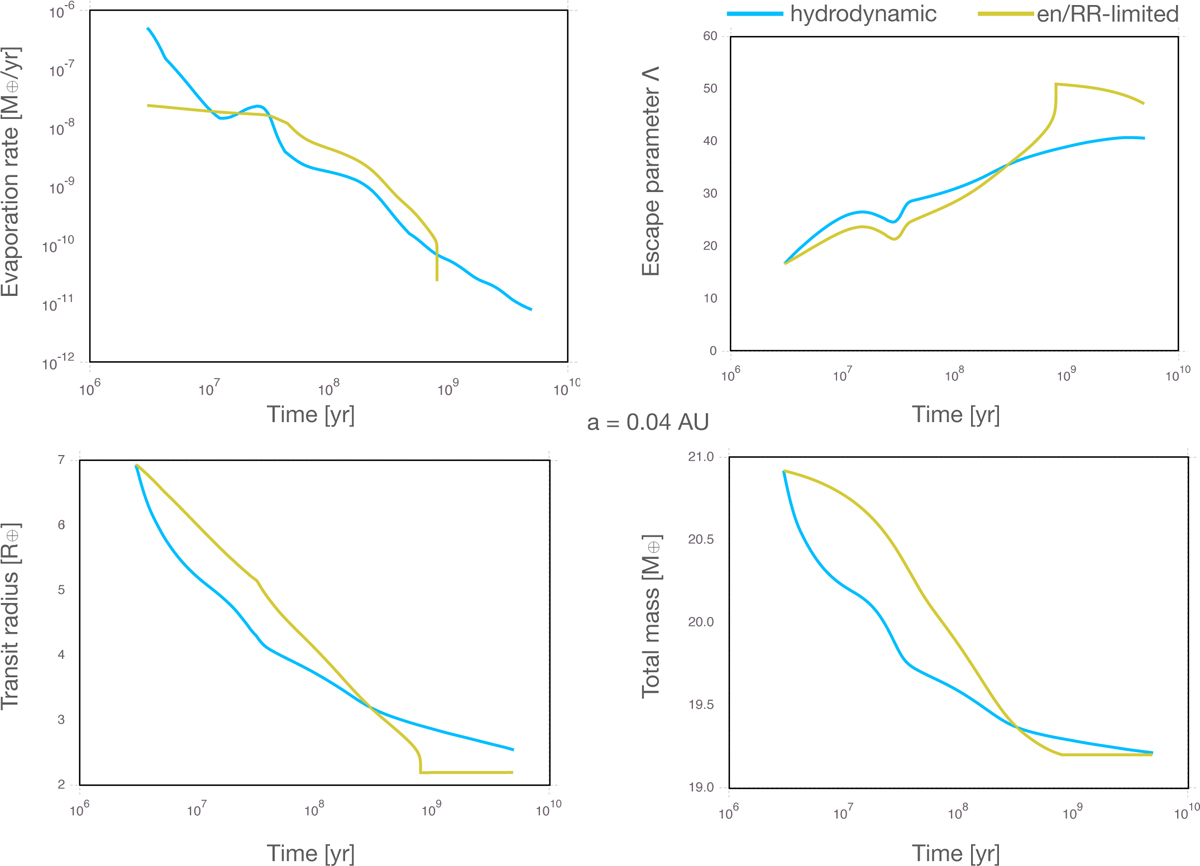Fig. 5

Download original image
Temporal evolution of the evaporation rate (top left), restricted escape parameter Λ (top right), transit radius (bottom left), and total mass (bottom right) for a planet at 0.04 AU and initial mass of approximately 20.9 M⊕. The hydrodynamic and the energy- and recombination-limited model are shown. Despite the lack of the initial boil off phase in the energy- and recombination-limited model, the higher mass-loss rate in this model after about 30 Myr results in complete envelope loss, in contrast to the hydrodynamic model. The planets therefore reside in the end on different sides of the valley (super-Earth for the energy- and recombination-limited model, sub-Neptune for the hydrodynamic model). The underlying reason is the negligence of conduction in the energy- and recombination-limited model, leading to too high escape rates. This planet is shown by the black squares in Fig. 3.
Current usage metrics show cumulative count of Article Views (full-text article views including HTML views, PDF and ePub downloads, according to the available data) and Abstracts Views on Vision4Press platform.
Data correspond to usage on the plateform after 2015. The current usage metrics is available 48-96 hours after online publication and is updated daily on week days.
Initial download of the metrics may take a while.


